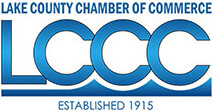How to Scale Your Restaurant and Boost Profits
Scaling a restaurant business is a multifaceted endeavor that demands a strategic approach and a deep understanding of industry trends. As the culinary landscape evolves, restaurant owners must adapt by embracing innovative marketing techniques, fostering strong supplier partnerships, and exploring new avenues for growth. By leveraging visual content and ensuring the security of marketing materials, restaurants can effectively communicate their unique offerings. Additionally, crafting comprehensive franchise documents and analyzing competitor strategies can provide a solid foundation for expansion. These elements, combined with a focus on quality assurance and strategic pricing, can position your restaurant for sustained success.
Crafting a Comprehensive Franchise Disclosure Document
When considering the expansion of your restaurant business through franchising, creating a detailed Franchise Disclosure Document (FDD) is crucial. This document, mandated by the Federal Trade Commission, serves as a comprehensive guide for potential franchisees, outlining the essential terms and conditions of the franchise agreement. The FDD includes 23 specific categories of information, such as financial obligations, litigation history, and trademark details, ensuring that prospective franchisees have all the necessary data to make informed decisions. By providing this structured and transparent document, you not only comply with legal requirements but also build trust with potential partners, significantly enhancing your business’s growth and profitability.
Enhancing Restaurant Marketing with Visual Content and PDF Security
Creating compelling marketing materials is essential for promoting your restaurant and attracting new customers. Engaging visuals, such as videos showcasing your signature dishes or the vibrant atmosphere during peak hours, effectively convey the unique dining experience your restaurant offers. Saving these marketing images as PDFs not only ensures they are easily shareable but also enhances their security, protecting your creative assets from unauthorized alterations. To streamline this process, check this out for a JPG-to-PDF converter tool that allows you to convert your image files into secure PDFs effortlessly. This approach safeguards your marketing materials while maintaining their quality, ensuring your brand’s message is consistently delivered.
Building Strong Supplier Relationships for Quality Assurance
To ensure the consistent delivery of high-quality ingredients, it is crucial to cultivate robust relationships with your suppliers. By working closely with suppliers, you can establish clear expectations and maintain transparency, which is essential for trust and reliability. For instance, collaborating with suppliers to adhere to strict food safety and quality standards ensures that customers receive safe and high-quality products. Additionally, fostering these relationships allows for continuous feedback and improvement, leading to a more resilient supply chain. By embedding these practices into your procurement processes, you can significantly enhance the quality and consistency of your offerings, boosting customer satisfaction and business growth.
Improving Restaurant Growth with Quality Assurance
Implementing a comprehensive quality assurance program is crucial for effectively scaling your restaurant business. By establishing clear metrics and benchmarks, you can consistently evaluate and enhance the performance of your operations. For instance, using a 1-10 scale to assess vendor performance allows you to quickly identify areas needing improvement, ensuring high-quality service. Regularly reviewing these metrics not only helps maintain standards but also fosters a culture of continuous improvement among your team. A robust quality assurance framework can significantly boost customer satisfaction and loyalty, driving growth and profitability in your restaurant business.
Leveraging Competitor Insights for Strategic Restaurant Expansion
To effectively scale your restaurant business, it’s crucial to analyze the locations and expansion tactics of your competitors. By understanding where your rivals are thriving, you can identify potential markets that are underserved or ripe for new entrants. This approach helps in selecting optimal sites and crafting a growth strategy that capitalizes on market gaps. For instance, if competitors are concentrated in urban areas, exploring suburban or rural locations might offer untapped opportunities. Additionally, studying their expansion successes and failures can provide valuable lessons.
Harnessing Market Insights for Strategic Pricing in Restaurants
To gain a competitive edge in the restaurant industry, it’s crucial to analyze both market trends and local competition. By understanding the pricing strategies of nearby eateries, you can identify opportunities to differentiate your offerings. For instance, if competitors frequently adjust prices based on seasonal demand, you might consider implementing a dynamic pricing model to stay competitive. Additionally, keeping an eye on consumer behavior and regional trends can help you anticipate shifts in demand, allowing you to adjust your prices proactively. Utilizing tools like AI-driven pricing software can streamline this process, ensuring you set optimal prices that enhance profitability.
Boost Restaurant Growth with a Tiered Loyalty Program
A tiered loyalty program can encourage customers to visit more often and spend more during each visit. Offering rewards like discounts or special access creates an incentive to reach higher levels. A lower tier might offer small perks, while top-tier members receive larger discounts and priority service. This approach strengthens customer loyalty by making them feel valued and part of an exclusive group. Using technology to manage the program ensures a smooth experience and provides useful insights for improvements.
Maximize Restaurant Revenue with Off-Hour Space Utilization
To boost your restaurant’s profitability, consider transforming your space during off-peak hours into a coworking area, event venue, or pop-up location. This strategy diversifies your income streams and taps into the growing demand for flexible workspaces and unique event settings. Offering your restaurant as a mid-sized event space can attract local businesses and community events, providing a premium yet cost-effective alternative to traditional venues. Additionally, hosting pop-up events can create memorable experiences for attendees, enhancing your brand’s visibility and customer engagement.
Incorporating these strategies into your restaurant’s business model can pave the way for substantial growth and increased profitability. By focusing on innovative marketing, strategic partnerships, and adaptive expansion tactics, you can build a resilient and thriving restaurant brand. Each step taken towards enhancing your operations and customer engagement contributes to a stronger market presence and long-term success.
Discover the power of connection with the Lake County Chamber of Commerce and join a vibrant network of businesses dedicated to fostering economic growth!
